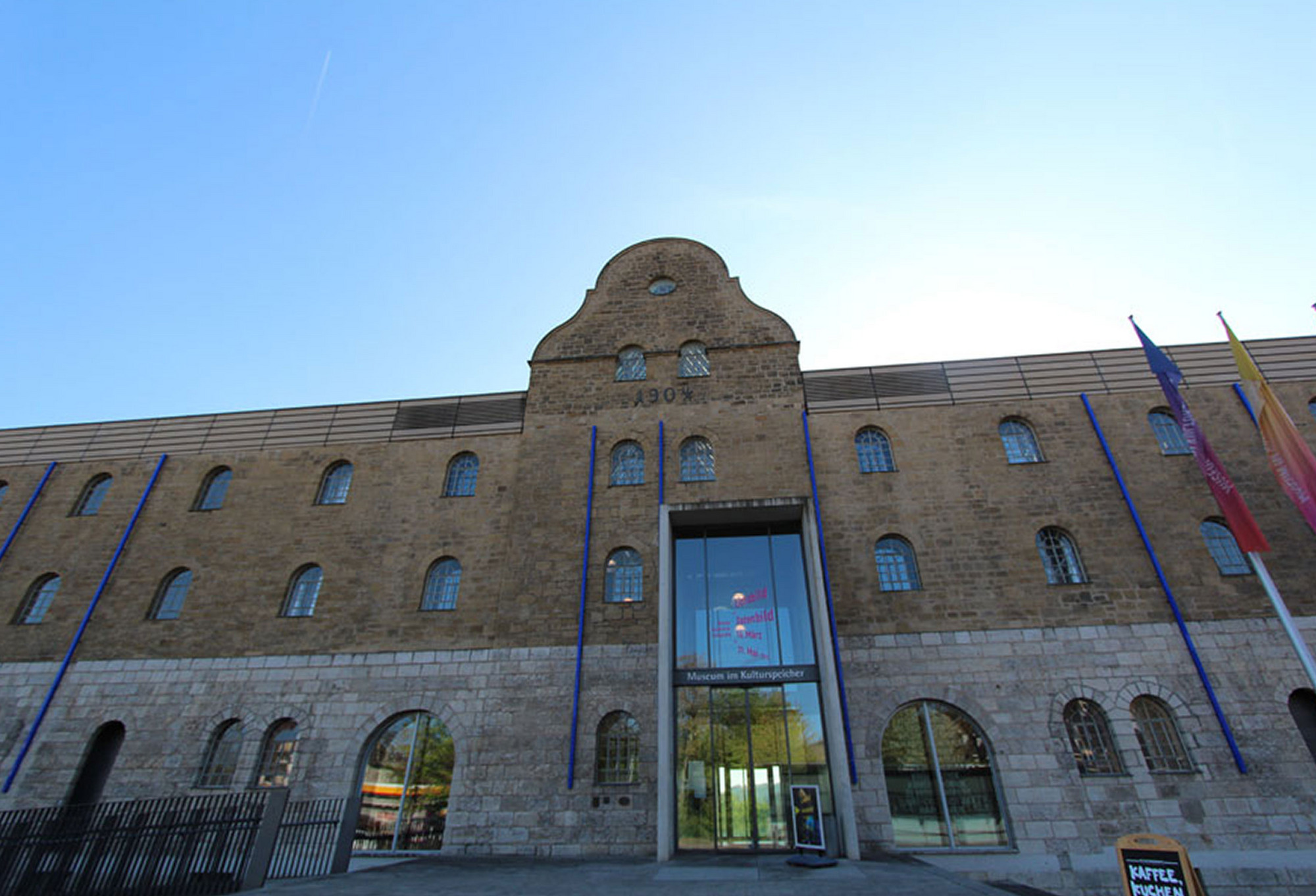The Augustinian Church
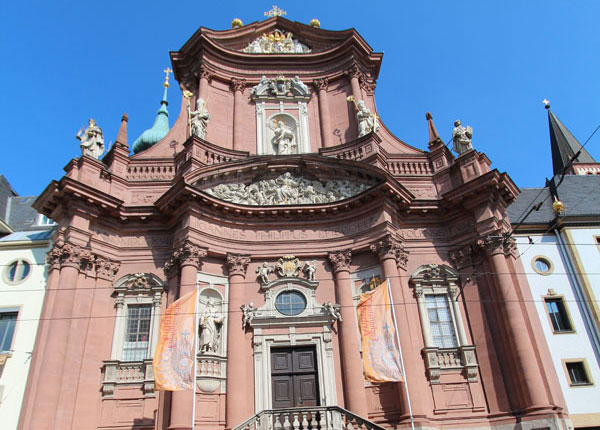
The Augustinerkirche is a catholic church building located in the city centre of Würzburg between Dominikanergasse and Dominikanerplatz. Its construction was started in 1266. This gothic building was completed in 1308 and more than 400 years later it was redesigned in baroque style by Balthasar Neumann. In 1741, the nave he planned was masterfully adapted to the existing early Gothic choir and furnished with stucco work by Antonio Bossi. The restoration of the church after its destruction in 1945 lasted until 1975 and the monastery was rebuilt in its old form. The baroque orientation of the church was maintained. Only the redesign in 2011 deviates from this by implementing the communion model as a space-determining concept. The theological idea behind it is the understanding of church as "succession community of equals".
Chapel of Mary
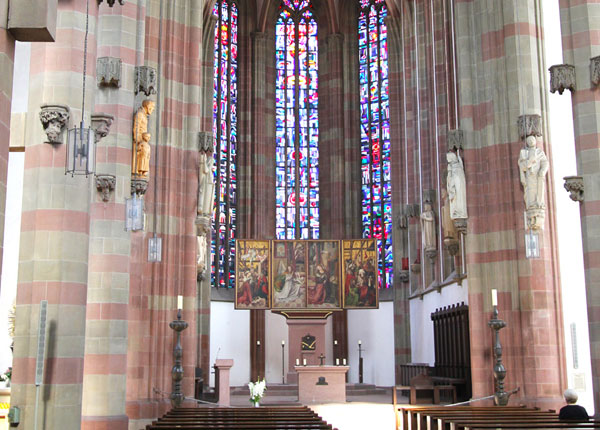
The Marienkapelle on the north side of Würzburg's market square is today a side church of the parishes of Dom and Neumünster owned by the Marienkapellenstiftung. In earlier times, however, it was the crystallization point of municipal commitment against the dominance of bishops, foundations and monasteries. The imposing late Gothic hall church of the citizens' assembly on the Lower Market Square is considered a highlight of the art history of Würzburg. Bishop Gerhard von Schwarzburg (1372-1400) laid the foundation stone for the choir of today's stone building in 1377, which was consecrated in 1392. The construction of the Marienkapelle was started in 1377 and completed with the tower construction around 1480. The chapel is directly connected to the destruction of the Jewish community of Würzburg. Below the sacristy there is still the Mikwe, the Jewish ritual bath, as a remnant of the former synagogue.
Würzburg Cathedral Treasury
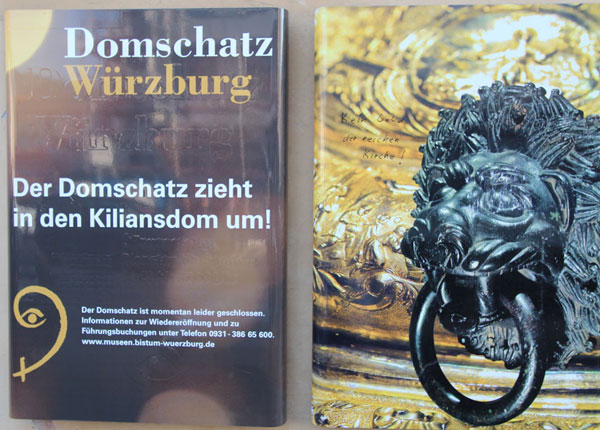
For a long time the treasures of the Würzburg Cathedral Treasury from more than ten centuries ago were considered lost due to the destruction of the Second World War. Only an elaborate search and restoration of supposed losses have allowed many works of art to be resurrected. Since March 2000, about 130 objects of the cathedral treasure from the 11th to the 20th century have been on display in the former Marmelstein Cathedral Court. Burial objects, sculptures and goldsmith's
Würzburg Museum in the Kulturspeicher
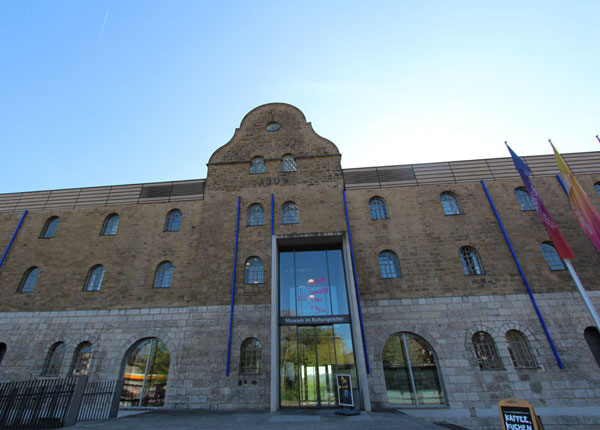
The historical substance of a granary at the Old Harbour dating from 1904 and the functional architecture of the present form the exciting framework for the Museum in Kulturspeicher, which opened in 2002. The building, originally constructed in 1904 for the Bavarian state ports, was converted into a cultural centre between 1996 and 2002.In this lively centre for the art of the 19th, 20th and 21st centuries, the visitor encounters works from the Romantic period, Biedermeier, Impressionism, Expressionism and the present day in over 3,500 square metres of exhibition space. The municipal collection was established after the First World War. The first holdings were assembled from the 1920s onwards.
Works were collected by artists with origins or activities in Würzburg and Mainfranken. In addition to temporary exhibitions, the presentation is complemented by the collection "Peter C. Ruppert. Concrete Art in Europe after 1945" with artists such as Max Bill, Günter Fruhtrunk, Victor Vasarely, including moving works of art, light objects, random pictures and art developed by the computer.
A hall on the second floor houses paintings of Würzburg before the bombing. In this respect, they also have contemporary historical significance. The "View of the Veste Marienberg" by Erich Heckel shows an unusual perspective of the fortifications.
Best Western Hotel Wuerzburg-South
Mergentheimer Strasse 162-168
97084 Würzburg
Tel.: 0931 61 51-0
Mail:info@bestwestern-wuerzburg.com
General Terms and Conditions & Data Protection
Terms and conditions for hotel accommodation contracts
Terms and conditions for event and meetings
Data Protection
Terms and conditions for hotel accommodation contracts
Terms and conditions for event and meetings
Data Protection
